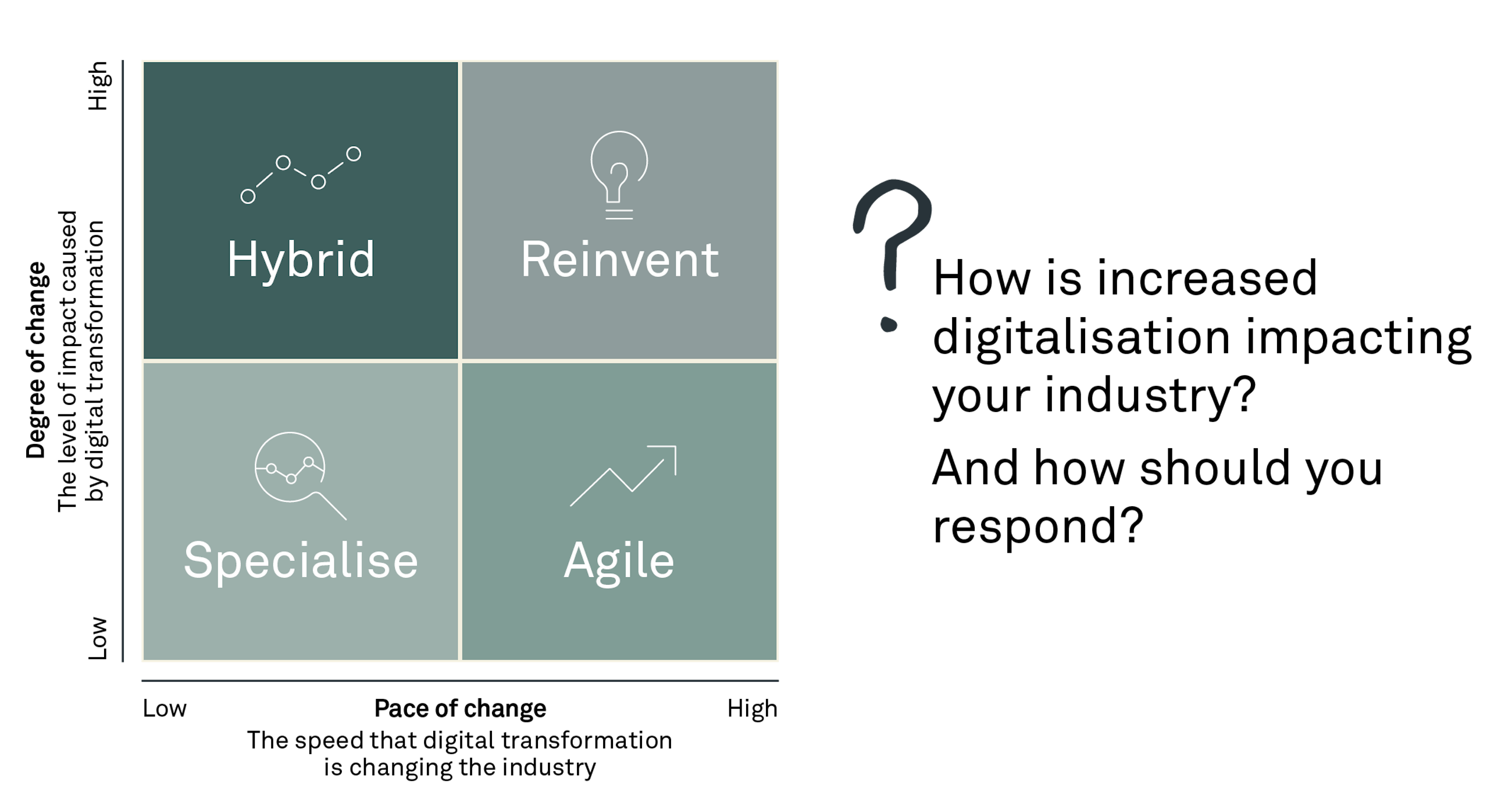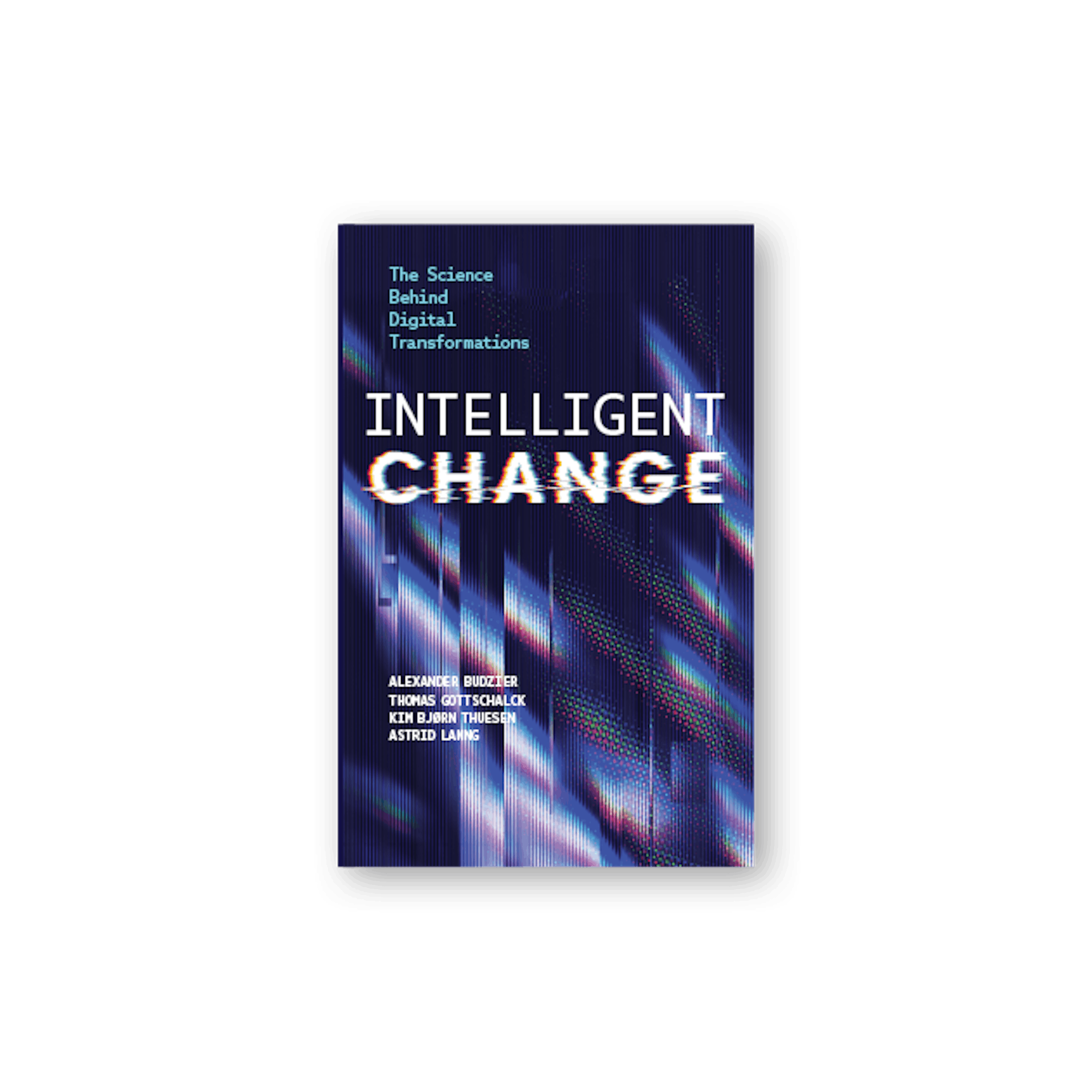10 June 2020
In times of crisis, it is natural for business leaders to focus on cutting costs and wait it out in the hopes of getting everything back to how it once was. But with every crisis comes real opportunity. And as the world is digitally “leapfrogging”, there are real opportunities for those who dare to seek it.
Crisis like the COVID-19 pandemic paralysed the world and forced many organisations to adopt new virtual ways of working, catapulting us ahead in terms of digitalisation. Now, many businesses are facing a challenging situation, as they desperately need to rebound in a market characterised by fierce competition and low or stagnated demand.
However, even in the current economic climate, we will see organisations successfully rebounding and flourishing. The organisations that can take advantage of new technologies to service customers in innovative ways, for example contact-free, will come out on top. Focusing on exploring and innovating digital solutions to improve the customer experience, building loyalty and launching new digitally enabled products and services will improve your organisation’s top line and give you a competitive edge in the post-crisis period.
Get a head start on digital transformation
Running a lean and fast-tracked digital strategy process will help prepare you for doing business in an increasingly virtual landscape. You can get started by considering the following seven questions:
1. What is the pace and impact of digitalisation in your industry? In other words, how prone are you to digital disruption?
2. Based on learnings from the pandemic, how can you tailor your business to new customer behaviour?
3. How can you enhance your unique selling point by leveraging emerging technologies in new ways?
4. How can you strike the right balance between top-line growth, optimisation and cost-cutting to secure funding for the next wave of digital initiatives?
5. Where should you focus your digital efforts and strategic focus? Should you develop new digitally enabled products and services, improve the customer experience via digital enablement and/or innovate processes and operations through digitalisation?
6. How can you engage in partnerships (e.g. with tech vendors) in a favourable commercial setup? There are many opportunities to enter win-win setups in times of crisis, for example outcome-based pricing and “no-cure, no pay ”.
7. How can you further strengthen your ability to operate efficiently and securely as a fully virtual organisation, so you can prepare for an uncertain future and shift your channels between physical and digital at the flick of a switch?
Keeping up the momentum on the digital journey
Establishing a digital operating model that enables continual digital innovation across the business while also introducing centralised governance is more important than ever before. This ensures that you keep exploring and searching for new solutions but always make the tough calls sooner rather than later.
We have gathered six recommendations for building a future-proof digital operating model:
- Adapt your organisation to fully leverage digital opportunities by reorganising and creating cross-functional teams that span business and IT skills with a clear mandate and a common goal/KPI.
- Introduce a dedicated digital transformation office to guide the journey centrally. Even if initiatives are driven in a decentralised manner, keeping information centralised is key to success.
- Unleash the entrepreneurial mindset in the organisation and ensure that ideation is for “the many” rather than “the select few”. But manage prioritisation and funding centrally so you are empowered to make quick and tough decisions.
- Focus on developing your digital maturity level in the long term, making sure to structure your operating model accordingly. As a rule of thumb, centralised digital transformation works best for low maturity organisations, while decentralised structures are best applied in digitally mature organisations.
- Build on your legacy and scale initiatives across the business to avoid silos and enable long-term digital efficiency.
- Always focus on the impact. Fully realising the benefits of digital initiatives requires a structured benefit realisation approach with clear impact targets, tracking and dedicated ownership.
It is natural to focus all attention and efforts on simply getting back to “normal”. But businesses must find new ways to thrive. Cost-cutting will not enable long-term growth. Businesses that dare to be courageous and proactively look to shape the “new normal” by applying technology in new ways and accommodating new customer needs will be the ones who come out on top post COVID-19.
Examples of organisations successfully leveraging technology to navigate the crisis
Walmart
The major US-based grocery retailer Walmart was quick to adapt its digital offerings in the midst of the crisis to offer contactless payment, a no-contact pickup or delivery via its app and online services and a drive-thru for prescription refills. Providing new digitally enabled services to customers and delivering a tailored customer experience not only safeguards the health of customers and staff but also contributes to building brand loyalty and grows the top line.
Randers Regnskov
A Danish zoo was heavily impacted by the COVID-19 restrictions and forced to stay closed for visitors. The organisation set up a daily live stream, providing school children with an opportunity for virtual visits to learn about animals. The stream is watched daily by thousands of children across Denmark and has boosted brand awareness. The zoo now has +80,000 followers on Facebook and several videos on YouTube with +10,000 views.
Evergrande Real Estate Group
The Chinese real estate developer mobilised its offline sales force, encouraging them to use virtual reality and social media to engage customers. The company also changed its non-refundable deposit policy to be fully refundable, exclusively for the online channel. Within three days, customers locked down 47,540 houses online by paying a mini down payment of RMB 3,000 (USD 431). As a result, the company’s sales reached RMB 44.73 billion (USD 6.4 billion) in February, up by 118% and topping the February housing sales list.
Sources
1 https://hbr.org/2020/03/what-coronavirus-could-mean-for-the-global-economy
2 https://hbr.org/2010/03/roaring-out-of-recession
3 https://www.wave3.com/2020/05/20/walmart-offer-hour-delivery-curbside-prescription-pickup-amid-covid-pandemic/
4 https://www.dr.dk/nyheder/regionale/oestjylland/randers-regnskov-underviser-tusindvis-af-boern-i-biologi-paa-nettet
5 https://www.pymnts.com/coronavirus/2020/covid-19-payment-commerce-innovation/
6 https://thechinaproject.com/2020/03/12/coronavirus-real-estate-agents-in-china-embrace-virtual-house-tours/






